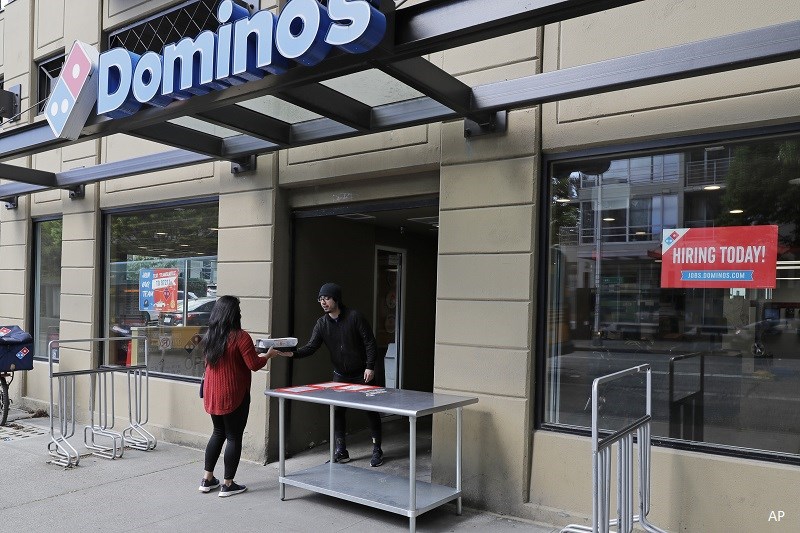
Editor's note: Read the latest on how the coronavirus is rattling the markets and what you can do to navigate it.
The ongoing coronavirus pandemic has heightened the value of some services that are better suited for stay-at-home requirements. One of them is food delivery services. While not immune from the overall fallout of the virus outbreak, meal-delivery businesses have benefitted from the lockdown and social distancing orders that have sparked a surge in demand for prepared meals.
Restaurants forced to switch from sit-down dining to takeout only operations represented new opportunities for companies delivering prepared meals. As an essential part of the current and the new post-pandemic economy, food delivery businesses are adapting to ride out the crisis and improve profitability beyond it. From cutting workforce, to deferring commissions, and from making acquisitions to exiting unprofitable markets, these businesses are swiftly recalibrating to navigate the current disruption and prepare for what is to come.
These measures could accelerate their path to profitability and deliver rich rewards down the road. Investors looking to tap into the takeout trend may want to add to their basket the following names that are well-positioned to benefit from shifting market dynamics and emerging business opportunities.
| Grubhub Inc | |
| Ticker: | GRUB |
| Forward Div Yield: | - |
| Forward P/E: | - |
| Price: | US $56.14 |
| Fair value: | US $48 |
| Value: | Fairly valued |
| Moat: | None |
| Moat trend: | Stable |
| Star rating: | *** |
| Data as of May 21, 2020 | |
A leading food delivery player and a direct competitor of Uber Eats, Grubhub (GRUB) provides an online takeout food platform for diners and restaurants. The firm generates revenue by charging restaurants a commission based on each order amount. It also charges consumers a fee for delivery. Grubhub has over 50,000 restaurant partners.
One of the first in the market, the service is now operating in a highly competitive landscape with well-funded rivals. “The firm has developed a sustainable network effect by pairing consumers with restaurants, as the market is now crowded with many other players,” says a Morningstar equity report, but cautions the company doesn’t benefit from any switching costs, as most partnerships with restaurants are nonexclusive.
Grubhub could take the acquisition route to remain one of the leaders in the space, but could face stiff competition from its well-capitalized rivals, says equity analyst Ali Mogharabi, in an April analyst note. However, later in May, Grubhub became an acquisition target instead, as Uber offered to buy the delivery service in an all-stock deal pending regulatory approval.
“Obviously, if such a deal were to take place, Grubhub’s current shareholders would be the main beneficiaries as the stock spiked 29% to US$60.39 on the report,” says Mogharabi in a recent report. He puts the stock’s fair value at US$48 and forecasts a double-digit annual revenue growth over the next 10 years.
| Uber Technologies Inc | |
| Ticker: | UBER |
| Forward Div Yield: | - |
| Forward P/E: | - |
| Price: | US $34.35 |
| Fair value: | US $48 |
| Value: | 28% discount |
| Moat: | Narrow |
| Moat trend: | Stable |
| Star rating: | **** |
| Data as of May 21, 2020 |
Leading ride-sharing player, Uber Technologies (UBER) provides shared mobility services, but also has a growing food delivery business, Uber Eats. The company operates in over 63 countries with over 111 million users that order rides or foods at least once a month. Ride sharing accounts for 76% of revenue, while 22% comes from food delivery.
“Uber Eats will be one of the main revenue growth drivers for the firm as it will benefit from cross-selling to its large ride-sharing user base,” says a Morningstar equity report.
Increased demand for online food delivery during the coronavirus pandemic prompted Uber to gear up for a bigger slice of the food delivery market. The company recently made a bid to acquire rival Grubhub. “The addition of Grubhub (which would increase Uber’s U.S. market share to around 48%, based on data from Second Measure) could strengthen the supply and demand sides of Uber’s network effect moat source,” says Mogharabi, who puts the stock’s fair value at US$48.
The acquisition of Grubhub will bring Uber a whole new customer base, which will in turn attract more restaurants and drivers for the latter. “Over time, this may not only reduce diner acquisition costs for Uber but will also allow it to more effectively cross-sell its two main businesses to a larger user base,” says Mogharabi.
| Domino's Pizza Inc | |
| Ticker: | DPZ |
| Forward Div Yield: | 0.83% |
| Forward P/E: | 36.36 |
| Price: | US $375.86 |
| Fair value: | US $335.00 |
| Value: | 13% Premium |
| Moat: | Wide |
| Moat trend: | Stable |
| Star rating: | ** |
| Data as of May 21, 2020 | |
Global pizza delivery service, Domino's (DPZ) hold nearly 19% market share of the US$84 billion global quick service pizza category. The company generates revenue through franchise royalties, company-owned stores, and sales from 27 dough-manufacturing and supply chain centers. It operates 17,100 stores, franchisees and company owned, in 85 markets.
Investors looking for investment opportunities in the food delivery and takeout space “should prioritize those players that possess the scale to be more aggressive on pricing, have robust mobile platforms, and healthy balance sheets,” says a Morningstar equity report, adding “Domino’s meets each of these investment criteria.”
The firm’s wide economic moat is built on a strong brand, a solid franchisee system, and scale advantages rooted in superior technology and delivery route density. While the global pizza category is set to become more competitive, Domino's is expected to remain ahead of industry growth trends for years to come as “carryout becomes an increasingly important contributor and the company stays ahead of the industry technology curve with autonomous delivery,” says Morningstar sector strategist R.J. Hottovy.
Unlike other restaurant chains hit by the pandemic, Domino's take-out and delivery model proved to be highly profitable during lockdown, says Hottovy, who recently raised the stock’s fair value from US$320 to US$335, prompted by “better-than-expected near-term sales trends despite coronavirus-related store operating restrictions and the potential for market share gains as the industry recovers.”
| Amazon.com Inc | |
| Ticker: | AMZN |
| Forward Div Yield: | - |
| Forward P/E: | 98.04 |
| Price: | US$ 2451.92 |
| Fair value: | US$ 2500 |
| Value: | Fairly Valued |
| Moat: | Wide |
| Moat trend: | Stable |
| Star rating: | *** |
| Data as of May 21, 2020 | |
Online retail juggernaut, Amazon (AMZN) clocked a whopping US$281 billion in sales last year, half of which came from online product and digital media sales. The company’s cloud computing business, Amazon Web Services, accounted for 13% revenue, while Prime membership fees and other subscription-based services contributed 7% revenue.
Having shut down its food delivery business, Amazon Restaurants, in the U.S. last year, the company is making a renewed push in the takeout market. The firm recently rolled out its online food delivery service, Amazon Food, in India to tap into the soaring demand for online food delivery during the coronavirus pandemic. Launched in Bangalore, the service is expected to expand to other Indian cities where it will compete with established local rivals Swiggy and Zomato to take a bite out of the country’s US$4.5 billion food-delivery market, according to an estimate by consultancy Redseer. Fuelled by a rising middle class, disposable income and greater adoption of prepared meals, India’s food-delivery market exploded 500% over the past two years.
The India venture comes close on the heels of Amazon’s foray into the U.K. where it invested a staggering US$575 million in Deliveroo, a homegrown meal delivery service which operates in more than a dozen countries.
“The company continues to find ways to evolve its business model,” says Hottovy, who recently raised the stock’s fair value from US$2,400 to US$2,500.
Passionate about investing in new ideas?
Explore the latest Global Thematic Fund Landscape report here






















